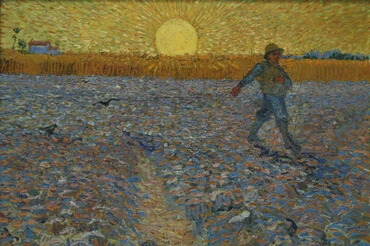Arcana Coelestia #200
200. The reason the tree of knowledge is now said to be in the middle of the garden, whereas previously in 2:9 the tree of life 1 is said to be in the middle of the garden, and not the tree of knowledge, is that 'the middle of the garden' means that which is inmost. And the inmost of the celestial man, or Most Ancient Church, was the tree of life, 1 which was love and faith deriving from it. But the middle of the garden, or that which was the inmost of this next generation, that is, of the man who may be called celestial-spiritual, was faith. No further description is possible, for the character of the people who lived in those most ancient times is totally unknown at the present day. Their disposition was entirely different from that which is at all possible with anyone today. To convey some intelligible idea of that disposition, let the point be considered that it was from good that they came to know truth, that is, from love they came to know anything of faith. But when that generation died out another took its place whose disposition was entirely different. That is to say, the new generation did not from good come to know truth, or from love come to know the things of faith, but instead had from truth a knowledge of good, that is, had from the things constituting the cognitions of faith a knowledge of those of love; and with the majority it was scarcely anything more than knowledge. Such was the change which took place after the Flood to prevent the destruction of the world.
Бележки под линия:
1. literally, of lives
Field

A "field" in the Bible usually represents the Lord's church, and more specifically the desire for good within the church. It's where good things start, take root, and grow. When you have a desire to be a good person and to do good things, the natural first questions are "What does that mean?", "What should I do?", "What can I do?". You look for ideas, concepts, direction. Once you figure out something you want to do or a change you want to make in yourself, you seek specific knowledge. If you want to volunteer at a food pantry, say, you'd need to know whom to call, when they need help, where to go, what to bring. Armed with that knowhow, you're ready to get to work. That process could be compared to food production. You start with a field -- which is that desire to be good. Then you plant seeds -- those ideas and concepts. Those seeds sprout into plants -- the specific facts and knowledge needed for the task (easily seen in the food pantry example, but also true with deeper tasks like "being more tolerant of my co-workers" or "taking more time for prayer," or "consciously being a more loving spouse"). Finally, those plants produce food -- the actual good thing that you go and do. The Writings also say that in a number of cases a "field" represents the doctrine, or teachings, of the church. This sounds markedly different. The desire for good is emotional, a drive, a wanting; doctrine is a set of ideas. But for a church to be true, its doctrine must be centered on a desire for good, and must lead people toward doing what is good. So sound doctrine is actually closely bound up with the desire for good.






